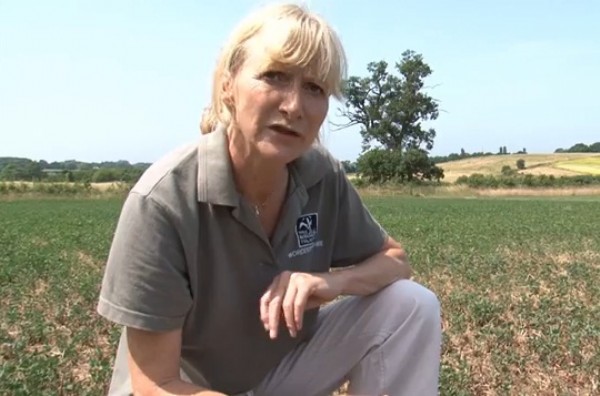

One of the objectives of the farm is to demonstrate ways of making a small acreage viable. When she started she was determined to get away from being dependent on achieving 3.5t wheat per acre and a share farming agreement.
There are part fields with cereals and other cash crops but there is also phacelia, mustard, trefoil, sainfoin, lucerne and deep rooting humus building leys that contain cocksfoot, red clover and chicory. The policy here is quite deliberate. Caroline is improving the soil by growing green manure crops, raising organic matter levels and the rest - including farm profitability - should follow
Caroline scrupulously analyses soil before and after green manures and has found some big changes. After what she refers to as 'investment' period in a field of up to four years she has an increased organic matter (OM) by 0.5%. This may not sound much but from a base of 3.5% that is a huge increase and that’s without FYM or compost. In other areas where household compost and manure have been used OM levels have been increased by up to 3%.
According to Caroline, the benefit of the increased organic matter is a warmer soil that is able to hold more water. Last winter she observed that snow melted five days earlier on high OM fields. Drought too is less likely to take effect and, critically, beneficial earthworm activity takes place over a longer period of the year in warmer fields, she says.
Caroline takes a field approach: identifying the best soil comparing it with the worst, then setting about to improve it. She digs test pits to assess soil structure and count earthworms. If she finds a soil pan that would restrict root growth she plants chicory or another deep rooting species to bust it. If it’s low OM that’s the problem then green manures are grown with added manure and/or compost when it’s available.
Green manures are also used to boost N levels. Depending on the mix, seeds are either shallow drilled or surface broadcast in two directions before firming with a 'Cambridge'roll. There are some occasions when heavy rain is imminent where the rolls are not used and the power of nature is harnessed instead. From short term sowings of 'Summer Quick Fix' she estimates that managed correctly, 50-60 kg N per ha will be there for the next crop. To create the best conditions for soil biology to breakdown green OM she doesn’t rush to use the plough in and aims to incorporate with minimum tillage then leave for 2-6 weeks before planting.
Date Posted: 29th March 2017



